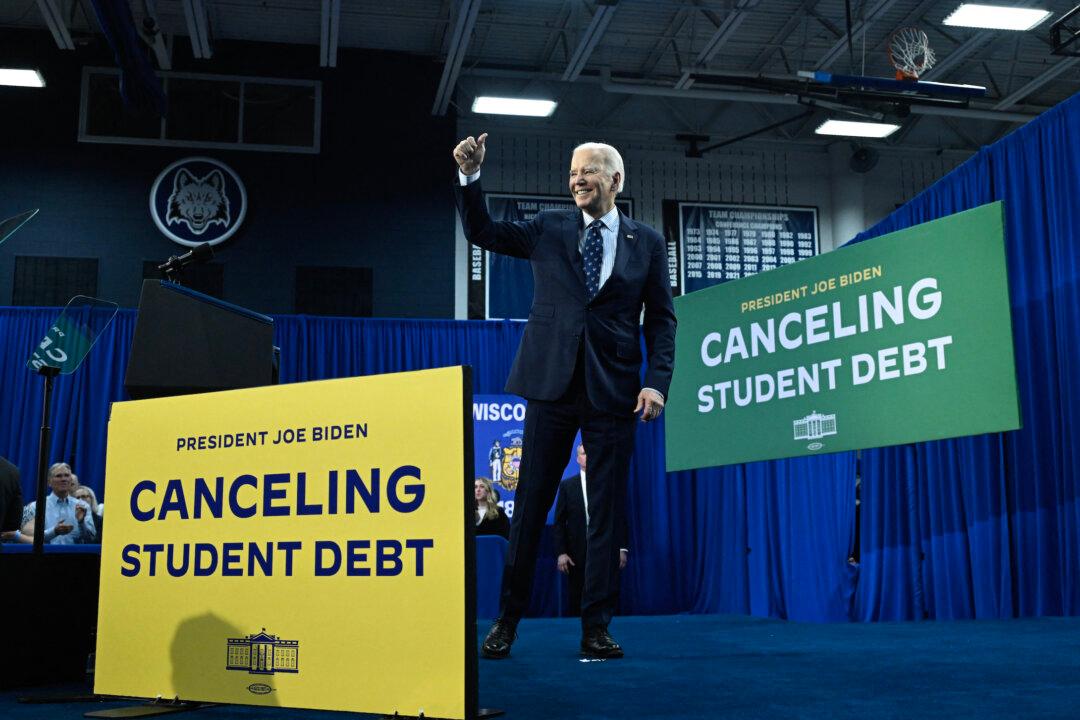Commentary
The Higher Education Act, signed into law in 1965 by President Lyndon Johnson, profoundly influences almost every facet of higher education in America.
Today, this law governs federal student aid, including all loans and grants and work-study. It defines what constitutes an academic year and “gainful employment.” And it authorizes numerous other federal programs that send taxpayer money to colleges and universities.
Critically, the Higher Education Act cemented federally approved accrediting agencies as gatekeepers to student financial aid, establishing a troubled marriage between accreditors and Congress. Conservatives have
called for reforms to the Higher Education Act since 2014, the last time it was due for reauthorization.
In January, Rep. Virginia Foxx (R-N.C.), chairwoman of the House Education and Workforce Committee, introduced HR 6951, legislation to reauthorize the Higher Education Act. Later in the month, her committee voted to advance the bill, called the
College Cost Reduction Act, a first step in getting consideration on the House floor.
Many of the policies included in the bill are a step in the right direction because they would reduce federal subsidies and increase accountability for taxpayers. Five key policies would:
1. Eliminate PLUS Loan Programs. The proposal would discontinue the Grad PLUS and Parent PLUS loan programs, which permit borrowers (either graduate students or the parents of undergraduates) to borrow practically unlimited sums from federal coffers. As currently operated, the PLUS loan programs enable students or their parents to borrow up to the entire cost of attending university from the federal government, which is a considerable driver of tuition inflation.
Evidence indicates that nearly
unrestricted access to federal student aid is associated with an increase in tuition costs. Eliminating the PLUS programs would bring down college costs and reduce dependence on federal student aid programs to finance higher education.
2. Establish Risk-Sharing Requirements for Public Universities. This change would mean that schools have some skin in the game and would be held accountable for the quality of the product they produce. If student loans remain unpaid, colleges would be on the hook for a portion of student loan defaults, shifting the burden of defaults from the taxpayer to the university.
Under Foxx’s proposal, universities would be responsible for annually reimbursing the government for a portion of unpaid interest and principal on loans tied to their former students. The repayment would be determined by the average total program cost and the earnings of graduates or the institution’s completion rate for nongraduates.
3. Repeal Harmful Regulations Imposed by the Biden Administration. The College Cost Reduction Act would rightly rescind two rules that unfairly target the for-profit sector: the Obama-era gainful employment rule and the 90/10 rule.
The gainful employment rule requires graduates of for-profit colleges to achieve government-defined debt-to-earnings income ratios. The 90/10 rule stipulates that federal funding cannot exceed 90 percent of an institution’s total revenue.
The 90/10 rule wrongly applies only to the for-profit sector. A
2013 report found that if the rule were applied to all higher education institutions, “80 percent of public two-year colleges would fail the test, as would 40 percent of public four-year colleges.”
4. Limit Bureaucratic Authority. The bill would prevent the nation’s secretary of education from establishing new student loan repayment plans or altering existing ones in a way that raises costs for taxpayers.
The legislation also would mandate that the secretary verify that any new regulations or executive actions concerning the student loan program would not raise costs for the federal government. It also would prohibit the issuance of any regulations that fail to meet this cost threshold.
5. Provide Much-Needed Accreditation Reform. Under the Higher Education Act the federal government has dictated to accreditors their role as gatekeepers for all federal student loan and grant programs established in Title IV.
Initially started as a voluntary system, accreditation of higher education institutions evolved into a mandatory practice under the Higher Education Act. Accreditors often overstepped their authority. As researchers at the Texas Public Policy Foundation found, they interfered “with legitimate governance of public colleges
in conservative states and demand[ed] racial preferences in admissions.”
Accreditation today also has proven to be an inadequate measure of program quality and student outcomes. It
hinders innovative, low-cost alternatives to the traditional four-year college model from gaining traction.
* * *
The proposed College Cost Reduction Act would create a new marketplace for accreditation by granting states the flexibility to designate accreditors tailored to specific industries. It would offer a pathway for new accreditors and require all accreditors to establish outcome standards for student achievement.
The bill also would forbid accreditors from mandating that institutions and programs meet any litmus tests, such as adherence to diversity, equity, and inclusion standards, as a prerequisite for accreditation.
Some areas for policy improvement remain, namely this bill would retain time-based student loan cancellation as part of the existing Income-Driven Repayment program.
Overall, however, the policies proposed in the College Cost Reduction Act include vital reforms for higher education, addressing many concerns about its value and affordability.
Views expressed in this article are opinions of the author and do not necessarily reflect the views of The Epoch Times.




